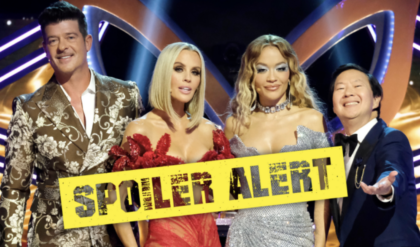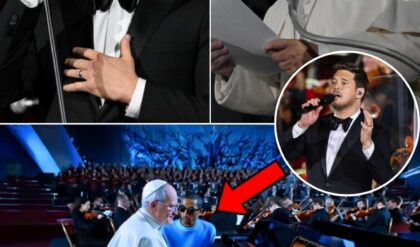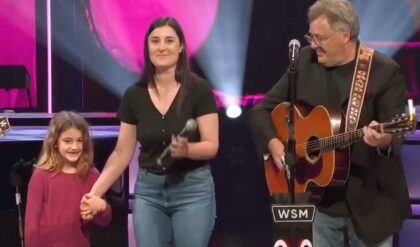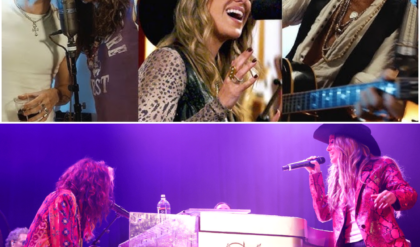Picture the scene: 70,000 fans roaring in unison, their voices reverberating through Levi’s Stadium, the San Francisco 49ers’ futuristic fortress in Santa Clara, California. The first half of Super Bowl LX, the landmark 60th edition of America’s grandest sporting event, has just ended in a clash of titans. The Bay Area air crackles with anticipation, thick as Pacific fog. As the lights dim, pyrotechnics ignite the sky, and a figure strides onto the stage—decked in oversized streetwear, eyes alight with defiance. It’s Bad Bunny, the Puerto Rican superstar whose Spanish-language anthems have conquered the world. On Sunday, February 8, 2026, Benito Antonio Martínez Ocasio, known to millions as Bad Bunny, will headline the Apple Music Super Bowl LX Halftime Show, delivering a performance that promises to be a seismic celebration of Latin culture, raw energy, and unapologetic pride. “This is for my people, my culture, and our history,” he declared in an NFL press release, adding with a playful smirk, “Go tell your grandmas we’re taking over the Halftime show.”
For the millions watching from living rooms worldwide, this isn’t just a performance announcement—it’s a cultural earthquake. Bad Bunny, the self-styled “King of Latin Trap,” has shattered records, redefined music genres, and built a fanbase that spans continents and generations. At 31, he’s not just taking the stage; he’s claiming it as a platform to amplify the voices of the underrepresented, weaving reggaeton, trap, and Latin heritage into a vibrant tapestry that will pulse through the biggest stage in sports entertainment. Following in the footsteps of Latin icons like Jennifer Lopez and Shakira, who set Miami ablaze in 2020, Bad Bunny’s selection marks a bold step in the NFL’s journey toward inclusivity. Buckle up, America: the halftime show is about to get a whole lot hotter, and the buzz suggests it’ll be the most electrifying 13 minutes in Super Bowl history.
To grasp the weight of this moment, we must journey back to the roots of a kid from Vega Baja, Puerto Rico, who turned bedroom demos into a global empire. Born on March 10, 1994, Benito Martínez Ocasio grew up in a modest coastal town where the rhythms of salsa and bomba mingled with the salty ocean breeze. His father was a truck driver, his mother a schoolteacher, and young Benito was a church choir boy with a secret passion for WWE wrestling—hence the “Bad Bunny” name, inspired by a childhood photo where he wore a bunny costume with a mischievous scowl. Music was a private escape; he taught himself guitar and crafted lyrics in the quiet of his room, blending Puerto Rico’s traditional sounds with the gritty pulse of hip-hop and EDM. By 19, he was studying audiovisual communications at the University of Puerto Rico at Arecibo, but his heart belonged to the lo-fi tracks he uploaded to SoundCloud under his now-iconic alias.
His big break came in 2016 with “Diles,” a sultry reggaeton track that dominated Puerto Rican airwaves and racked up millions of streams. Signed to Hear This Music, Bad Bunny’s rise was nothing short of meteoric. His 2018 debut album, X 100pre, was a genre-defying masterpiece—fusing trap, rock, and bachata—that landed at No. 8 on the Billboard 200, a historic feat for a Spanish-language record. The hits kept coming: YHLQMDLG (2020), El Último Tour Del Mundo (2020), and Un Verano Sin Ti (2022), which held the Billboard 200’s top spot for 13 weeks, becoming the longest-running Spanish-language No. 1 album ever. He’s been Spotify’s most-streamed artist for three consecutive years (2020-2022), the first non-English-language act to achieve that, and was crowned Billboard’s Artist of the Year in 2022. With over 50 billion streams and a net worth exceeding $40 million, Bad Bunny isn’t just making music—he’s rewriting the rules of global stardom.
His achievements transcend charts. He’s headlined Coachella as the first solo Spanish-language act, sold out Yankee Stadium twice in one weekend, and flexed his acting chops in Bullet Train alongside Brad Pitt. His activism adds depth to his persona: he donated concert proceeds to Puerto Rico’s recovery after Hurricane Maria, championed gender equality by rocking a skirt on a Rolling Stone cover, and publicly clashed with political figures over immigration policies. Songs like “Yo Perreo Sola” became feminist anthems during the pandemic, while “El Apagón” called out Puerto Rico’s energy crisis. Bad Bunny’s music is a megaphone for the marginalized, making his Super Bowl slot not just a performance but a cultural manifesto.
Now, imagine that energy unleashed at Levi’s Stadium. Bad Bunny framed the gig as a love letter to his roots: a moment to elevate the voices that shaped global music. That cheeky call to “tell your grandmas” is quintessential Benito—irreverent, inclusive, and rooted in the warmth of family traditions. With Roc Nation, Jay-Z’s production juggernaut behind the halftime show since 2019, the spectacle will be next-level. Fans are already buzzing about the setlist: expect thunderous hits like “Tití Me Preguntó,” “Moscow Mule,” and “Me Porto Bonito,” possibly spiced with guest stars like J Balvin, Rauw Alejandro, or even a WWE-inspired cameo—Bad Bunny’s a known wrestling fanatic, after all. Will he lean into political fire, as he did when slamming ICE raids? Or keep it a full-throttle fiesta with bomba dancers, LED visuals, and a stage that transforms the field into a San Juan street party? Picture lasers slicing the night, confetti cannons erupting, and a sea of fans waving Puerto Rican flags in euphoric unity. Whatever he cooks up, it’ll be a sensory overload.
The Super Bowl Halftime Show is no mere intermission; it’s a cultural juggernaut that defines pop history. Michael Jackson’s 1993 moonwalk at Super Bowl XXVII, backed by a 30-foot animatronic “Hand of God,” drew 134 million viewers, forever elevating the format to must-see TV. Aerosmith and ‘N Sync rocked 2001, Katy Perry’s Left Shark stole 2015, and Beyoncé’s 2016 Black Panther-inspired Formation sparked global discourse. Recent shows have upped the ante: Dr. Dre, Snoop Dogg, Eminem, and Kendrick Lamar’s 2022 West Coast love letter drew 121 million viewers, while Rihanna’s 2023 aerial pregnancy reveal from the LV Sphere roof mesmerized audiences. Usher’s 2024 roller-skating spectacle honored R&B’s golden age. Bad Bunny follows Lopez and Shakira’s 2020 bilingual extravaganza, which celebrated Latinx power amid a global crisis. His show could redefine the template, blending reggaeton’s infectious pulse with a visual narrative that screams Boricua pride.
Levi’s Stadium is the perfect canvas for this Latin explosion. Opened in 2014 as the 49ers’ $1.3 billion home, this 68,500-seat marvel in Silicon Valley boasts a translucent ETFE roof that floods the field with sunlight, solar panels powering 20,000 homes, and Wi-Fi for every fan to live-tweet Bad Bunny’s every move. It hosted Super Bowl L in 2016, where Coldplay, Beyoncé, and Bruno Mars delivered a technicolor spectacle to 111 million viewers. For 2026, expect upgrades: tailgate zones with Latin food trucks dishing out mofongo and empanadas, VR fan experiences, and a pre-show DJ set by Puerto Rican tastemakers. Santa Clara anticipates 150,000 visitors pumping $200 million into the local economy—hotels booked from Palo Alto to Oakland, bars hosting pre-game fiestas rivaling Carnival. The city projects $6.3 million in security and infrastructure costs, a small price for the global spotlight.
The announcement has set social media ablaze. On X, #BadBunnySuperBowl racked up over 500,000 posts in a day, a cocktail of euphoria and sass. “WE ARE SO READY,” one fan tweeted, sharing a meme of Bad Bunny as a caped hero storming the field. Another quipped, “My non-Spanish-speaking self watching Bad Bunny next February,” capturing his universal appeal. Celebrities joined the hype: J Balvin called it “a dream for Latinos everywhere,” while Cardi B roared, “Benito’s gonna make the stadium shake like an earthquake!” Jay-Z, who personally called Bad Bunny mid-workout to share the news—”I was sweating bullets,” Benito laughed—praised his “unmatched energy.” In Puerto Rico, San Juan erupted in impromptu block parties, with Instagram flooded by abuela memes: “Mi nieto me dijo que Bad Bunny va al Super Bowl… ¡y yo voy a bailar!”
Not everyone’s thrilled, of course. Conservative critics revived Bad Bunny’s 2024 anti-Trump barbs and ICE critiques, with one pundit calling it “the NFL’s latest woke surrender.” Another questioned the Spanish-language focus, claiming it alienates the 86% of Americans who don’t speak Spanish. But defenders clapped back: “You’re not the target—that’s the point,” one viral reply shot, noting the NFL’s 20 million Latino fans. The numbers back this up: reggaeton streams have surged 40% since 2020, and Bad Bunny’s show could boost Latin music by 30% overnight, per industry projections.
This performance is more than a concert; it’s a cultural pivot. Bad Bunny could ignite a new era of genre fusion, much like Prince’s rain-soaked 2007 Purple Rain set. Young Boricuas in the Bronx or Miami barrios will see their hero own the world’s biggest stage, inspiring the next generation of artists. Speculation runs wild on the setlist—a medley from YHLQMDLG to Nadie Sabe Lo Que Va a Pasar Mañana, perhaps with a wrestling-ring entrance for flair. With tickets via On Location starting at $7,500 for premium packages with field access, the countdown is on. Will he drop a surprise album? Team up with a Bay Area icon like E-40? Or spotlight Puerto Rico’s struggles? One thing’s clear: Levi’s Stadium will pulse with perreo, pride, and pandemonium. Dust off your flags, practice your moves, and tell your grandma—Bad Bunny’s about to make Super Bowl history. ¿Estás listo? The world’s ready to bunny-hop into the future.




